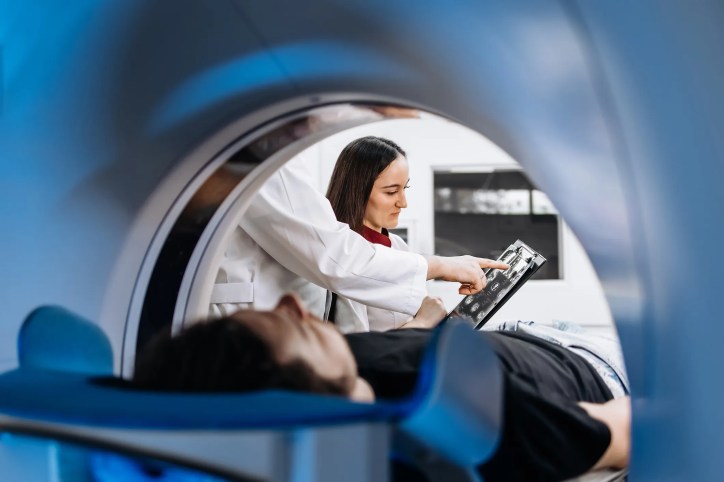MRI’s history traces back to the 1930s with Isidor Rabi’s discovery of nuclear magnetic resonance, which demonstrated that atoms could emit radio waves in a magnetic field. Building on this, Paul Lauterbur and Peter Mansfield independently developed the imaging techniques that would become MRI, with Lauterbur publishing the first images in 1973. The first full-body human MRI scan was performed in 1977, and commercial scanners became available in the 1980s. Now, MRI is one of the most commonly used imaging techniques in modern medicine with over 30 million scans performed each year, and ASTM standards play a crucial role in promoting the safety of MRI technology.
What Is MRI Technology?
MRI technology (Magnetic Resonance Imaging) is a non-invasive medical imaging technique used in radiology to produce highly detailed images of organs and structures inside the human body. It is particularly valuable for imaging soft tissues (the non-bony parts of the body), such as the brain, spinal cord, muscles, ligaments, and internal organs. This imaging method uses strong magnetic fields, radio waves, and computer processing to generate images of the body’s internal structures without using ionizing radiation (unlike X-rays or CT scans).
In an MRI machine, a magnetic field aligns atoms within the body and radio waves disrupt that alignment. When the radio waves stop, the atoms return to their original position and emit signals that are converted into images on a computer monitor.
Uses of MRI Technology
MRI technology is useful for detecting and diagnosing numerous medical conditions, including tumors, joint injuries, certain heart problems, and neurological disorders like Alzheimer’s disease, dementia, and Parkinson’s disease. This versatile imaging tool is also used for the following:
- Detecting and assessing conditions like brain tumors, strokes, multiple sclerosis, and spinal cord injuries.
- Diagnosing ligament tears, cartilage damage, bone infections, and other joint problems
- Assessing heart conditions, detecting aneurysms, and evaluating blood vessel health
- Visualizing organs like the liver, kidneys, and reproductive organs, aiding in the diagnosis of diseases like cancer, inflammation, and structural abnormalities.
- Imaging the pelvic and abdominal organs
- Screening for breast cancer
- Evaluating pelvic pain
- Tracking the progression of diseases and the effectiveness of treatments over time
- Monitoring an unborn child in the womb
MRI Safety
While MRI is a powerful diagnostic tool, safety is paramount due to the strong magnetic fields, radiofrequency energy, and potential interactions with metallic objects. Key aspects of MRI safety include careful screening of patients and personnel, proper management of medical devices and implants, and strict control of access to the MRI environment. To help manage the safe use of MRI, ASTM standards lay out requirements.
What Are the ASTM Standards for MRI Safety & Testing?
ASTM International has developed several key standards related to MRI safety and testing, including the following:
- ASTM F2052: Covers guidelines for measuring attractive force on a device when placed near the MRI scanner (static magnetic field).
- ASTM F2119: Evaluates MR image artifacts caused by passive implants.
- ASTM F2182: Focuses on measuring radio frequency (RF) induced heating on and near passive implants during MRI.
- ASTM F2212: Addressees the torque (twisting force) on a device due to MRI’s magnetic field.
- ASTM F2052: Outlines a method for measuring magnetically induced displacement force on medical devices in the MR environment.
- ASTM F2213: Details a method for measuring magnetically induced torque on medical devices in the uniform magnetic field of an MR system.
- ASTM F2503: Provides a system for marking medical devices and other items to indicate their safety conditions in the MR environment. It uses specific terms and icons to communicate whether an item is MR Safe, MR Conditional, or MR Unsafe.
These standards cover the labeling, testing, and performance evaluation of devices used in and around MRI environments as well as the safety of patients with active implantable medical devices during MRI scans.
